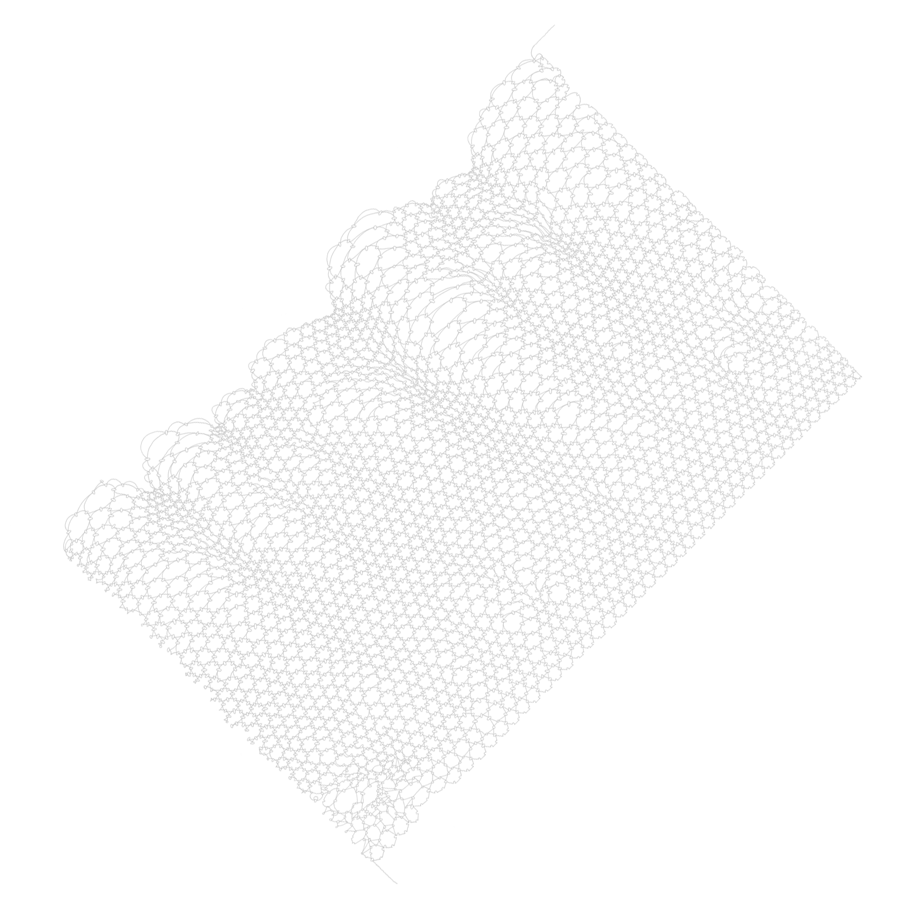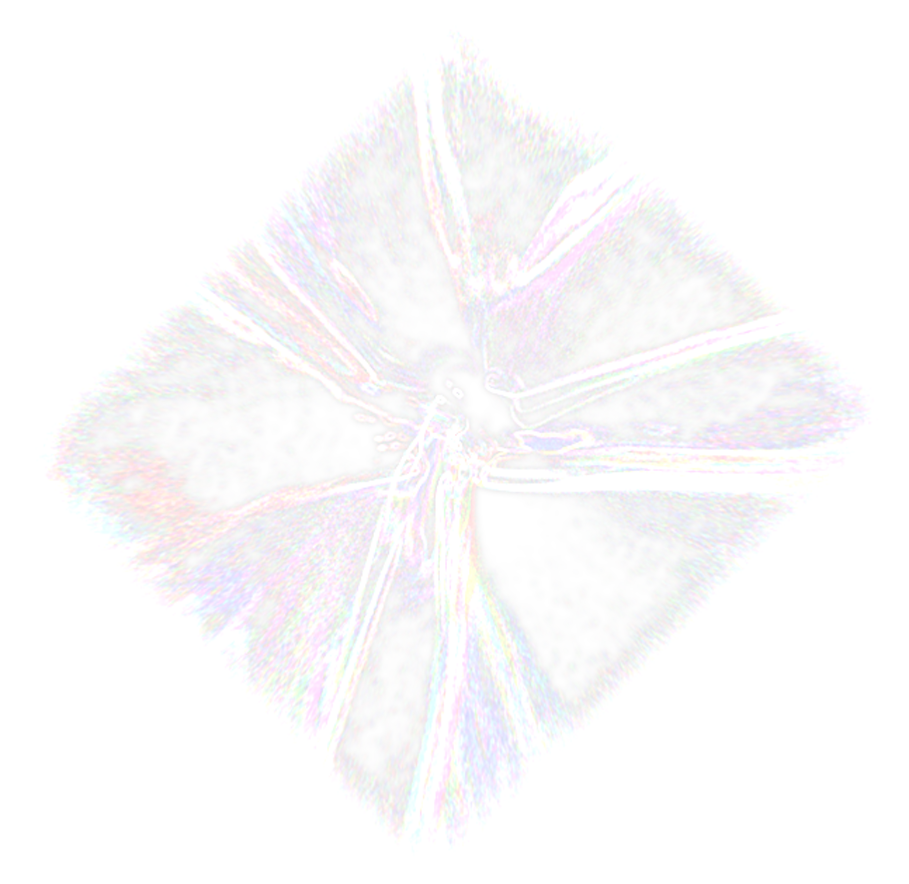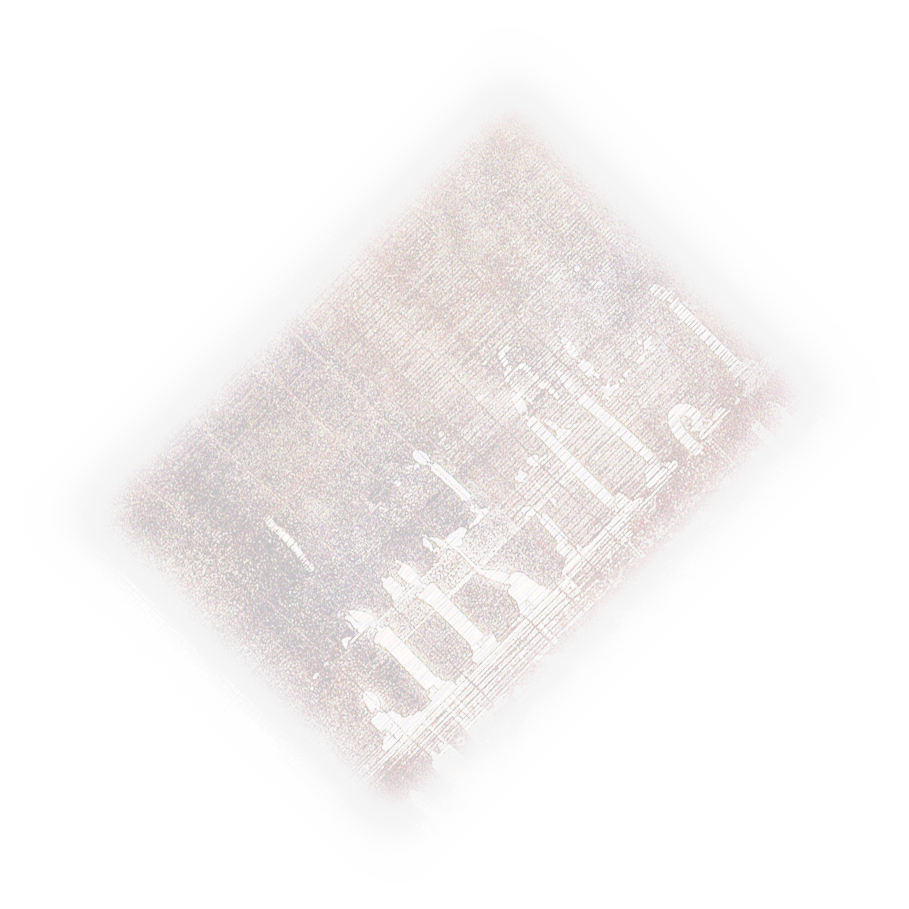1.6の登場
作品のサイズや数、展開方法(作品の並べ方)に、6という数が現われるようになったのは、いつの頃からだったでしょうか……
ともかく、1997年に名古屋のガレリアフィナルテで行った初個展のときには、大きなサイズの作品が6点、中くらいのサイズの作品が6点、そして、小さなサイズの作品が6点でしたから、その頃にはもう明確に意識していました。
ただし、6という数は、そのサイズにまでは完全に及んでおらず、大きなサイズの作品は103cm角という中途半端な数の正方形、中くらいのサイズの作品は30cm角の正方形、小サイズは15cm角の正方形でした。
大きなサイズの作品の103cm角というサイズは、直接には素材(塩化ビニールシート)の幅からくる限定であったと思いますが、用紙の「B全」と呼ばれるサイズ(正確にはB1)の長辺の長さが103cmであったことは意識の片隅にありました。
ともあれ、この最初の個展が、6という数を意識的に導入したきっかけであったことはまちがいないようです。
それから後は、6という数がどんどん支配的になってきて、なにか、6という数の倍数になっていると落ち着く……という型枠ができてしまったようです。
2.なぜ6なのか
では、なぜ6なのか……といいますと、これは、本当は、12だと思います。つまり、12進法です。
ただ、いきなり12というと大変なので、まず、半分の6から……ということでしょう。
では、なぜ12なのかといえば、まず浮かぶのは、バロック以前の音楽のことです。
そのころ(最初の個展の頃)……、私は、バロック以前の音楽、もっといえばバッハという大海に流れ込んで終末を迎えたヨーロッパの古い音楽に興味を持って、中古CD屋さんをあさっていろいろ買い集めていました(といっても趣味の域ですからあまりたいしたことはありませんが)。
自分なりにいろいろ聞いてわかってきたことは、その世界では、「12」という数に到達するのが一つの目標だったのではないか……ということです。
それは、大きく2つの方法でアプローチされるようです。
まず一つは、曲をまとめるときの単位であって、一つの基準が12にあり、12がえらければ半分の6であり、12が越えられれば次は24……というような感じでしょうか。
バッハを例にとりますと、彼の無伴奏のヴァイオリンとチェロのための曲集は、ともに6曲づつの組です。もっとも、無伴奏ヴァイオリンのための曲は、ソナタが3曲、パルティータが3曲で合計6曲ですが……。
有名なブランデンブルグ協奏曲も6曲、鍵盤のためのフランス組曲、イギリス組曲、パルティータもそれぞれ6曲になっています。管弦楽組曲だけはなぜか4曲ですが、5曲目があるという話もあり、もしかしたらこれも6曲だったのかもしれません。
それから、平均律クラヴィーア曲集になりますと、一挙に数が増えて、第1巻が24曲、第2巻も24曲で、合計48曲となります。
私は、最初は、これはバッハという人にみられる個人的な傾向かなあ……と思っていたのですが、バロック以前の作曲家は、他の人にもこの傾向が多くみられるのを知り、これは、もしかしたら当時の一般的傾向性だったのかなあと思いはじめました。
では、なぜ6,12,24という6進法あるいは12進法が好まれたのか……というと、その答は、おそらく音律(テンパラメント)に内蔵された12という数が基本になっているからなのではないでしょうか。
3.平均律への道
現在、「平均律」というと、1オクターブを均等に12等分する、いわゆる「平均律」のことで、現在ではほとんどの楽器の調律が、この方法でなされているようです。すなわち、半音を100セント、全音を200セントとして、1オクターブを100セント×12の1200セントとする非常に機械的な平均律が用いられているようです。
しかし、バッハの時代には、そうではなかったようで、彼の有名な『平均律クラヴィーア曲集』の「平均律」も、現代の100セント×12の平均律ではなかったようです。
このあたりのお話しは、純正調における和音の響きの方を大事にするか、それとも楽器、とくに鍵盤楽器における転調の自由さの方を取るのか……というややこしい問題がからんできて、私のような素人にはとてもついていけない複雑怪奇?な世界になっているようですが、ともかく、バッハの「平均律」は、和音の響きの美しさと転調の自由度の両立を求めてぎりぎりまで模索した、その結果ということで、彼は長調12、短調12の合計24の調子が組み合わされた『平均律クラヴィーア曲集』を我々に残したわけです。
バッハ以前の作曲家を見ますと、やはりこのような「平均律」を求めて、さまざまな試みがなされていたようで、バッハの試みは、それらの作曲家や音楽理論家の累々たる屍を越えて、ようやく到達した一種のゴールという趣があります。
バッハの「平均律」は、結局、当時のヴェルクマイスター音律の一種ではなかったかという人もおられるようですが、本当にバッハが、どのような「平均律」で24曲を構成したのかは、正確にはわからないようです。ただ、我々が今でいう、100セント×12の平均律ではなかったことは確かなようです。
4.現象と理念のズレ
では、なぜ、バッハは、1オクターブを均等に12分割する現代の「平均律」を採用しなかったのか……。
それは、当時の音響技術の限界ということもあったのでしょうが、さらに本質的には、やはり純正調における和音の響きと「平均律」を両立させる道をギリギリまで探る……という選択と申しますか、彼の時代には、1オクターブを均等に12分割するというような「野蛮な」ことは、一種「非道徳的」といいますか、それはルール違反でござるというような一般的な了解があったのではないでしょうか。
私は、このあたりに、今の我々の考え方と、バッハ以前の人々の考え方の、決定的な違いを見るように思います。
すなわち……バッハ以前の人々の考え方の中には、現象と理念のズレというものをはっきりと認識して、その差を大事にするといいますか、なぜ、物事は思い通りにうまくいかないのか……ということを詰めていくことに対する一種の敬虔といってもいいような思いがあったのではないかと思います。
その中で、12という数が、現象と理念を橋渡ししてくれる、一種特別な数として意識されていたのではないかと私は考えます。
5.1年が360日だったら……
たとえば現在の暦では、1年を365日とし、4年に1回、閏年として1年が366日の年を設けて、暦と地球の公転周期を合わせています。
しかし……1年がピッタリ360日であったら……これは、もう、なにもいうことはありません。
つまり、地球の公転周期が自転周期のピッタリ360倍であれば、これは、円周を360等分する角度の分割方法とピッタリと重なりますので……現実の暦というものを、完全に理念の世界の理論によって構成できることになります。つまり、理念の世界と現実の世界は完全な一致をみることになります。
しかし、現実の世界は、360という理念的な数から、ほんの僅かにズレている……そのために、理念の世界と現実の世界の辻褄を合わせなければならない……この努力をどのように見るのか……。
私は、この暦のお話と、先程の音律のお話には基本的なところで共通点があるように感じます。
6.3×4
昔から、西洋においては、3は精神の数、4は物質の数と考えられてきたようで、したがって、3角形は精神的なものの象徴(ルシフェリックパワー)、4角形は物質的なものの象徴(アーリマニックパワー)でした。
たとえば、6種類あるプラトン立体(正多面体)の中でも、もっとも単純な正4面体は正3角形4枚の組み合わせで火を表し、これは、物質的なものから一番遠い位置として、精神を表す象徴にもなっています。
これに対し、正方形(正4角形)を6枚組み合わせた正6面体は土を表し、物質的なものの象徴です。
そして、3を4回足した数、あるいは4を3回足した数である12が、精神と物質を統合する、いわば「完全数」として考えられているということのようです。
1オクターブがなぜ12に分割されるのか、そして、1周360度はなぜ12の30倍なのか……これらの根本的理由というのは、おそらく人間には永遠に謎にとどまるでしょう。
ただ……実際に、作品を作るさいに、いろいろなところで出てくる数を12あるいは6という数にしてみると、「あ、これでよし」という不思議な安定感が得られるのは事実です。
私たちは、作品を作る場合に(そして、おそらく日常の行動においても)、理念的な世界と現象的な世界を、それこそ光速も越える?ような速さでフラッシュバックを繰り返しながら、もぞもぞとなにかをなしている……のではないかと思います。
デカルト以来の哲学では、思惟の世界と延長の世界……ということになるのでしょうが、この、本来絶対に相容れない全く異なった世界をできるだけうまくつなぐ一つの蝶番の役割を果たしているものが、私にとっては、6であり12であり……という数になっているような気がします。
そして……6を越えて7。これはもう完成といいますか、次の段階が始まる……というまったく新たな展開の数になりますね。
この先、自分の作品がどのように展開していこうとも、6進法の枠を作っていく働きだけは、特に、発表を伴う場においては、どこまでもついてまわるような気がします。
1.The six appeared
I can't remember the certain date of the appearance of the "six" in my work, in quantity of works, in the size of works, and in arrangement of works. Anyway, at the time of first private exhibition that I went for in Galleria Finarte of Nagoya in 1997, I have been already conscious definitely at that time because I set six works of the big size, six works of the middle size, six works of the small size.
But the dominance of the number of six is not perfect. The size of the big work is 103cm square (is not divisible with 6), that of the middle work is 30cm square (is divisible with 6), and that of the small work is 15cm square (is not divisible with 6). The size of 103cm square (the size of big work) mainly came from the limitation of the size of material, the width of the film of the vinyl chloride, but there certainly was that the length of the long side of the "B size (exactly B1) " was 103cm, in my consciousness, partly. Anyway, it seems reliable that this first private exhibition became an opportunity to introduce a number of 6 into my conscious. After that, the number of six became more dominant, and I felt good if I use the numerical multiple of six. This became a fixed frame in my work.
2.Why is the "six" ?
Why is the "six" ? …… Actually, it is 12 that is duodecimal system. But the number of 12 is too big to catch at first sight, so it begins with 6, the half of the 12. And so, why is the 12 ? I remember baroque music here.
I was interested in baroque music these days and collected the CDs of this domain. The baroque music is old European music before Bach, and the number of 12 plays one big role there. A composer of that times commonly thought that to compose one collection of tunes with multiple of 12 pieces, with 12, 24, 36, and 48 pieces. Or there were six also, the half of the 12. For example, at J. S. Bach, his "unaccompanied violin sonatas and partitas" is constituted with 6 tunes, "unaccompanied cello suites" also. Famous "Brandenburg concertos" was comprised with 6 tunes, too. "English suites", "French suites" "Partitas" for keyboard, also. His "The Well-Tempered Clavier Book1" consists of 24 pieces, Book2 also consists of 24 pieces, so there are 48 pieces totally. I thought this tendency to 12 is typical of Bach, but later, I recognized that this tendency is also exist in other composers in this times. In other words, this tendency was popular in the baroque era. Then why was the senary scale or the duodecimal system liked?……The answer was probably that a number of 12 is that of tones that was included in one octave.
3.The road to equal temperament
In modern age, "the equal temperament" means a tuning method that to divide one octave into twelve equal parts, and almost all musical instruments are tuned using this method now. In this method, a semitone has 100 cents and a whole tone has 200 cents. In this method, a semitone has 100 cents and a whole tone has 200 cents, and one octave has 1200 cents. This is a most mechanical tuning method. But in the times of Bach, there were many other temperament. Even his famous "The Well-Tempered Clavier" seemed not to be a equal temperament.
The problem between the equal temperament and others, were linked to the problem that one regards the ease of the modulation as important or he respects harmony of the chord. In other words, there are a basic contradiction between the beauty of chord and the ease of modulation. The temperament which J. S. Bach used is approaching the limit of this hard problem to compose 12 major keys and 12 minor keys. Many composers before him also challenged this problem but they couldn't reach the perfect goal like Bach did. But the temperament which he used is not clear now. Someone says his temperament was like that of Werckmeister, but no one knows a correct answer. What can say is only that it was not a modern equal temperament. What can say is only that it was not a modern equal temperament that has twelve 100 cents.
4.Between idea and phenomenon
Then why did Bach not adopt a modern "temperament" that make an octave division into 12 equally ? Of course there might be the technical limit of the then sound technology. However, as a basic reason, I think that it might be an agreement among the then people that it is a barbarian act to divide an octave into 12 equally mechanically.
Between the way of thinking of people in the Bach's era and that of our times, there are basic difference, I think. I think that, in the way of thinking of the people before Bach, there were a basic thought that the difference between idea and phenomenon is very important. When things do not progress just as wanted, they didn't rely upon only power like us. I think that they thought about causes. What disturbs the solution to problem? I think that it was a kind of devotion to think about it. Bach did not choose the way to divide an octave to 12 equal parts. In him, the number of 12 was a special number that mediate a phenomenon and an idea maybe.
5.If one year has 360 days……
With the current calendar, one year has 365 days, and, once in four years, 366 days as a leap year. So the calendar and revolution periods of the earth are synchronized. If so, the circumference that is orbit of the earth is divided into 360 parts, and one day becomes one degree, and a real calendar and ideal calendar completely agree. But the real world has a little difference with the ideal world that has 360 days in one year. Therefore, the people operate a calendar to cancel that difference. How do you understand this effort? The story of calendar and the story of temperament are common in a basic place, I feel it.
6.3 times 4
From ancient time, 3 is a spiritual number and 4 is a material number, in Europe. Then, the triangle is a symbol of the spiritual power (power of Lucifer) and square is a symbol of the material power (power of Ahriman) . For example, the simplest Platonic solid is the regular tetrahedron which is comprised of four pieces of equilateral triangles, and it represents "fire" that has longest distance from material things. In contrast, the regular hexahedron comprised six squares, and it represents soil and is the symbol of a material thing. And the number of 12 that is 3 times 4 or 4 times 3, is the perfect number and seemed to unify spirit and matter. Why one octave is divided into 12 ? And why 360 degrees(one circle) is divided into 12 times of 30 degrees ?……Probably these rationales will remain mysterious for human being forever.
But at the process of making my work, I feel so good from the number of 12 or 6, in size, in the quantity of works etc. But at the process of making my work, I feel a causeless stability from the number of 12 or 6, in size, in the quantity of works, etc. In making works, and in everyday life maybe, we are making a round trip to the world of the phenomenon and the world of the idea, in the lightning speed. According to the cartesian world, there are the realm of thinking and the realm of matter, and these two worlds are never crossing. But there is an existence that links these two worlds as hinge, and this hinge is the number of 12, or the number of 6, for me.
And seven, this number is transcendental. The next of six. It should be "perfect", and the next stage begins. I don't know how my works change in future. But I am convinced that the frame of six will be left in a place of my exhibition.







